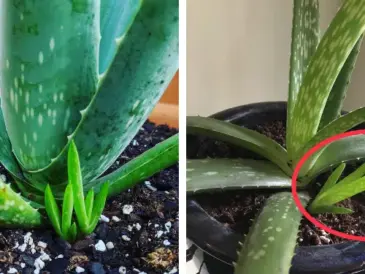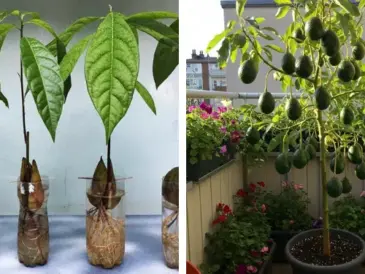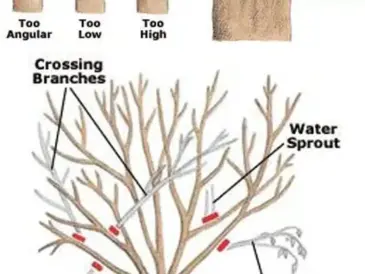When most gardeners think of planting, spring usually comes to mind – fresh soil, longer days, and bursts of new life. But autumn has its own secret magic.
Fall is one of the best times to sow flower seeds that rest through winter and burst into life as soon as the weather warms again.
Why Plant Seeds in Fall?
Fall sowing is a quiet gardener’s secret that delivers big rewards. Here’s why it works so well:
1. Nature’s Timing
In the wild, plants drop their seeds in autumn. Those seeds lie dormant through the cold months, then germinate as soon as spring warmth arrives. Fall sowing simply follows this natural cycle.
2. Less Work in Spring
You’ll save time when gardening season gets busy. Fall-sown seeds germinate on their own, allowing you to enjoy early blooms without spring rush.
3. Stronger Plants
Seeds that experience winter’s chill produce hardier, more resilient plants with deeper root systems and better drought tolerance.
4. Beautiful Early Blooms
While others are still planting in spring, your garden will already be alive with color and growth.
How to Sow Seeds in Fall
To set your seeds up for success, follow these simple guidelines:
- Choose the right timing: Sow after daytime highs drop below 60°F (15°C) but before the ground freezes.
- Prepare the soil: Loosen the top 2–3 inches, remove weeds, and mix in compost or leaf mold for nutrients.
- Sow shallowly: Many fall seeds need light to germinate; cover only lightly with soil or fine mulch.
- Label your spots: Mark each sowing area – winter weather can erase your memory by spring!
- Water lightly: Moist soil helps seeds settle in but avoid overwatering as cooler weather slows evaporation.
Now let’s dive into the stars of the fall sowing season – the 14 seeds you can plant now for a breathtaking garden later.
1. Poppies (Papaver spp.)
Poppies are the ultimate fall-sown flower. Their tiny seeds need a cold period to germinate and prefer to be scattered directly outdoors.
When to sow: Late fall, just before the first frost.
How to sow: Sprinkle seeds over loosened soil; don’t cover – they need light to sprout.
Bloom time: Late spring to early summer.
Bonus: Poppies reseed themselves effortlessly, creating a self-sustaining display year after year.
Best varieties:
- Oriental poppy – large, ruffled petals in scarlet or pink
- California poppy – delicate orange blooms that love poor soil
- Iceland poppy – pastel shades perfect for cottage gardens
2. Larkspur (Delphinium consolida)
Often mistaken for true delphiniums, Larkspur thrives in cool weather and struggles in hot climates – which makes fall the perfect time to plant.
When to sow: Late fall or early winter.
How to sow: Direct sow into well-draining soil; seeds need light frost to break dormancy.
Bloom time: Late spring to early summer.
Bonus: Larkspur produces tall, elegant spikes that attract bees, butterflies, and hummingbirds.
Color palette: Pink, lavender, white, and deep indigo blue.
3. Nigella (Love-in-a-Mist)
Few flowers are as whimsical as Nigella, with its feathery foliage and star-like blooms surrounded by delicate misty bracts.
When to sow: Mid to late fall.
How to sow: Scatter seeds directly and rake lightly into the soil.
Bloom time: Late spring.
Bonus: The dried seed pods are decorative and excellent for floral arrangements.
Colors: Sky blue, white, pink, and purple.
4. Calendula (Calendula officinalis)
Also known as pot marigold, Calendula adds vibrant color and herbal benefits to your garden. It thrives in cool weather and reseeds easily.
When to sow: Early to mid-fall.
How to sow: Direct sow about 1/4 inch deep in well-draining soil.
Bloom time: Early spring through summer.
Bonus: Edible petals make a cheerful addition to salads and teas, and the flowers attract pollinators early in the season.
Colors: Golden yellow to deep orange, sometimes bi-colored.
5. Bachelor’s Button (Centaurea cyanus)
The Bachelor’s Button, or Cornflower, is a classic cottage garden favorite that grows easily from fall-sown seeds.
When to sow: Late fall.
How to sow: Scatter seeds over the soil and lightly cover.
Bloom time: Late spring to early summer.
Bonus: These hardy annuals can tolerate frost and even light snow, making them perfect for fall planting.
Colors: Brilliant blue, pink, lavender, and white.
6. Sweet Peas (Lathyrus odoratus)
Sweet peas are one of the most beloved fragrant flowers, and fall sowing gives them a strong start before summer heat arrives.
When to sow: Early to mid-fall, especially in mild climates.
How to sow: Soak seeds overnight to soften; plant 1 inch deep in compost-rich soil.
Bloom time: Late spring to early summer.
Bonus: Sweet peas bloom more profusely when they experience cool, moist early growth.
Fragrance: Intensely sweet and nostalgic – perfect for cut flower gardens.
7. Foxglove (Digitalis purpurea)
Foxgloves are biennials that bloom in their second year, making fall the ideal time to start them. By spring, they’ll grow strong rosettes and be ready to flower the following year.
When to sow: Early to mid-fall.
How to sow: Sprinkle seeds on the surface; press lightly but don’t cover – they need light to germinate.
Bloom time: Early to mid-summer (the following year).
Bonus: These towering spires of bell-shaped blooms are magnets for hummingbirds.
Colors: Pink, cream, white, and purple with speckled throats.
8. Hardy Annual Alyssum (Lobularia maritima)
Sweet Alyssum forms fragrant, low-growing carpets of blooms that thrive in cool weather.
When to sow: Mid-fall in mild regions, early spring in cold areas.
How to sow: Scatter seeds over loosened soil; press lightly to ensure contact.
Bloom time: Spring through early summer.
Bonus: Its honey-scented flowers attract beneficial insects and fill borders beautifully.
Colors: White, lavender, and soft pink.
9. Coneflower (Echinacea purpurea)
If you love hardy perennials that return each year, Echinacea is a must. Fall sowing helps seeds experience cold stratification naturally, boosting germination.
When to sow: Early to mid-fall.
How to sow: Direct sow or start in pots left outdoors through winter. Cover lightly with soil.
Bloom time: Mid to late summer.
Bonus: Drought-tolerant and adored by bees and butterflies.
Colors: Purple, pink, white, and orange varieties available.
10. Black-Eyed Susan (Rudbeckia hirta)
Rudbeckia is another hardy perennial that germinates beautifully after a cold winter.
When to sow: Late fall.
How to sow: Sprinkle seeds in sunny garden beds and cover lightly with soil.
Bloom time: Summer to early fall.
Bonus: Produces golden-yellow daisy-like flowers that last for months and self-seed readily.
Pro tip: Combine with purple coneflower for a stunning summer color contrast.
11. Columbine (Aquilegia spp.)
Columbine is a graceful woodland perennial that benefits from natural chilling. Fall sowing produces healthier plants and earlier blooms.
When to sow: Mid to late fall.
How to sow: Sow directly outdoors or in pots; cover lightly with soil.
Bloom time: Mid to late spring.
Bonus: Excellent for shady gardens and loved by hummingbirds.
Colors: Blue, pink, yellow, purple, and two-toned varieties.
12. Shasta Daisy (Leucanthemum x superbum)
Few flowers are as cheerful as Shasta Daisies, and fall planting ensures earlier blooms and stronger roots.
When to sow: Early to mid-fall.
How to sow: Sow shallowly in well-draining soil and keep moist.
Bloom time: Late spring through summer.
Bonus: Long-lasting blooms make great cut flowers, and they return reliably year after year.
Colors: Classic white petals with golden centers.
13. Lupine (Lupinus polyphyllus)
Lupines thrive on cool temperatures, making them ideal for fall sowing. The cold months help soften their tough seed coats for better spring germination.
When to sow: Mid to late fall.
How to sow: Nick the seeds with sandpaper or soak overnight; sow about 1/4 inch deep.
Bloom time: Late spring to early summer.
Bonus: Their tall spires and bold colors attract pollinators and add drama to garden borders.
Colors: Blue, pink, white, red, and multicolored hybrids.
14. Penstemon (Beardtongue)
A native favorite, Penstemon produces tubular flowers that bees and hummingbirds love. It’s hardy, drought-tolerant, and ideal for fall planting.
When to sow: Late fall.
How to sow: Sow outdoors or in cold frames; press seeds lightly into the soil.
Bloom time: Late spring through summer.
Bonus: Once established, Penstemon can bloom for several seasons with minimal care.
Colors: Shades of pink, violet, and crimson.
How to Protect Fall-Sown Seeds Over Winter
While most of these hardy varieties tolerate cold, a few simple steps can help them make it through severe winters:
- Mulch lightly: Cover with a thin layer of straw, leaves, or pine needles after the ground freezes to prevent soil heaving.
- Avoid heavy mulch early: If applied before the ground freezes, it can encourage premature germination.
- Water before frost: Moist soil retains heat better than dry soil, protecting seeds from freeze-thaw cycles.
- Label everything: Use weatherproof tags or write plant names on flat stones so you don’t lose track come spring.
Bonus: A Few Vegetables to Sow in Fall Too
While you’re at it, why not add a few cold-hardy vegetables to your autumn planting list? These will either overwinter or give you early spring harvests.
- Garlic: Plant cloves in late fall for summer harvest.
- Spinach: Sow seeds 6–8 weeks before first frost for spring growth.
- Onions: Overwintering varieties will start growing as soon as days lengthen.
- Carrots and parsnips: Fall sowing improves sweetness after frost exposure.
Designing Your “Sow Now, Bloom Later” Garden
Want to create a truly spectacular spring display? Combine fall-sown flowers for layered color and texture:
- Early bloomers: Poppies, Alyssum, and Larkspur
- Mid-season color: Calendula, Nigella, and Sweet Peas
- Long-lasting perennials: Coneflower, Black-eyed Susan, and Shasta Daisy
Interplant them with spring bulbs like tulips and daffodils for a garden that bursts with continuous color from April through July.
Planting seeds in fall is like writing a love letter to your future garden. You won’t see the results immediately – but come spring, your patience will be rewarded with lush growth and vivid blooms that seem to appear overnight.




